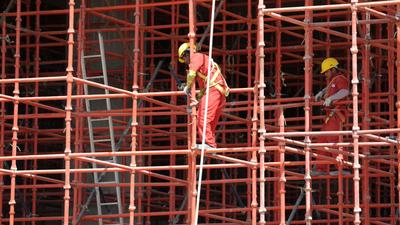In FY 2009/10, for example, the share of all 28 states and 7 Union Territories combined in India’s total government expenditure and revenue was 53 per cent and 64 per cent respectively. For this reason, and given the rising importance of fiscal policy and sovereign debt sustainability following the global financial crisis, constructive debates on how to improve Indian states’ public financial management are increasingly important.
Gujarat accounts for 5 percent of India’s population, but 7.2 percent of its GDP, and 25 percent of its exports. Its per capita gross state domestic product (GSDP) is projected to be USD 2100 by March 2013. The real GSDP has grown at an annual average rate of 10.3 percent between FY 2005-06 and FY 2010-11
Gujarat’s FY 2012/13 budget presents a sound development strategy and, in light of the state’s proven record of competent implementation, the proposals are highly likely to be translated into outcomes. The development strategy outlined in the budget is informed by both knowledge economy and management, and by a keen sense of opportunity. The budget recognises that in the next 15 to 20 years India and Gujarat must take advantage of favourable demographic trends, the aspirations and dynamism of its people, and other relatively benign external factors, if it is to emerge as a state with high human development.
The annual planned expenditure for 2012–13 is estimated at Rs506 billion (US$10 billion), which is equivalent to 9.9 per cent of the GSDP. Social services have been allocated 40 per cent of the budget, with agriculture and related areas set to receive 32.4 per cent, and transport 9.8 per cent. Several initiatives in the budget indicate that a knowledge-based development strategy has been adapted to Gujarat’s specific context and needs. These initiatives also show that Gujarat is looking to the future and aiming to empower all citizens in an even-handed manner. The drive towards inclusiveness is also reflected in a proposal to erect a statue of unity, to be named after a politician belonging to the congress party who is currently in opposition.
Gujarat is set to become the first Indian state to generate solar power through panels mounted atop a 100-kilometre stretch of the Narmada canal. This could reduce water losses through evaporation — a major problem in canal irrigation — and it could also help economise on land, which remains a major constraint on projects to develop solar power in India. The energy generated through the panels will be available for villages near the canal, substantially improving their connectivity, and thereby helping them meet the challenges of the 21st century.
The state budget provides for other infrastructure projects, such as upgrading 5800 kilometres of roads connecting villages and cities, and completing agricultural electricity connections by 2015. On a larger scale, a planned partnership between Gujarat state companies and central government companies will build interstate petrochemical pipelines that will service about one-third of the country.
Empowerment through training and information is also highlighted as a priority, with the budget allocating funds to build an autonomous university to train professionals in the fields of infrastructure, engineering and management — a vital initiative given India’s infrastructure needs. E-libraries will also be created throughout the state, and it is expected this will empower people to participate in the digital age.
There is also much interest in Gujarat’s state budget beyond the allocation of resources. The aggregate fiscal indicators show a revenue surplus of Rs36 billion (US$718 million), and an overall deficit of Rs178 billion (US$3.5 billion), equivalent to 2.63 per cent of the GSDP. While these figures suggest a moderately encouraging aggregate fiscal outcome, they are highly dependent on sustaining the rapid economic growth of recent years.
There are also concerns about Gujarat’s moderately high debt-to-GSDP ratio. Estimates from the Reserve Bank of India for 2010–11 put Gujarat’s debt ratio at 31.4 per cent, lower than West Bengal (40.8 per cent) and Bihar (39.5 per cent), but higher than Haryana (18.9 per cent), another state with solid infrastructure investment. This suggests that Gujarat’s fiscal space is more limited than its deficit figures indicate and that it must avoid negative growth shock and improve capital productivity.
There are two other areas in need of substantial improvement. First, Gujarat needs to focus on improving its social and public health indicators, particularly the sex ratio, infant mortality rate, and rural and urban sanitation. These challenges have also been noted across other parts of the country and present a difficult challenge. Second, the budget documents need to be more analytical and informative, explaining the strategy and assumptions underlying the exercise. It is time for Gujarat to begin multi-year budgeting and to gradually progress from cash to accrual accounting. This will permit construction of asset registry and balance sheets, facilitating more productive use of state assets, and public financial management.
These are important challenges, which Gujarat will have to address in years to come. But, designed to keep Gujarat’s lead as a high-growth, innovative and competent state in federal India, the FY 2012–13 budget is consistent with the needs of the state and of the country.
Mukul Asher is Professor at the Lee Kuan Yew School of Public Policy, National University of Singapore.

